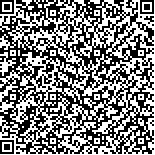| 本文已被:浏览 627次 下载 1273次 |

码上扫一扫! |
|
|
| 南海细菌胞外多聚物的神经保护活性筛选 |
|
卫茂生1,2,3, 王清池1,2,3, 耿丽华1,2, 岳洋1,2, 孙超岷1,2, 张全斌1,2
|
|
1.中国科学院海洋研究所 海洋大科学研究中心, 山东省实验海洋生物学重点实验室, 山东 青岛 266071;2.海洋科学与技术试点国家实验室 海洋生物学与生物技术功能实验室, 山东 青岛 266237;3.中国科学院大学, 北京 100049
|
|
| 摘要: |
| 本文采取传统的醇沉水溶的工艺提取了深海细菌的胞外聚合物(extracellular polymeric substance,EPS),使用过氧化氢作为损伤剂建立SH-SY5Y人神经母细胞瘤体外氧化损伤模型。在安全剂量下评价EPS的体外神经保护活性,确定16种活性良好(细胞活力>90%)的EPS。16种EPS的成分分析结果如下:1)16种EPS的分子量分布呈三段式,分别为>200 kDa,10~200 kDa和<10 kDa;2)16种EPS单糖组成中除甘露糖、葡萄糖外,还有稀有单糖氨基葡萄糖、鼠李糖、葡萄糖醛酸、氨基半乳糖、半乳糖、岩藻糖;3) EPS的总糖含量为14.06%~21.40%,蛋白含量为10.66%~31.05%,硫酸基含量为2.91%~26.53%。通过对相应菌株进行16S rDNA全序列分析并与GenBank比对,完成了活性菌株的鉴定,通过MEGA7.0和Figtree构建系统进化树。鉴定结果表明,16株深海细菌归属于3门8科9属16种,分布在三个门类:厚壁菌门(Firmicutes,9/16),变形菌门(Proteobacteria,6/16)和放线菌门(Actinobacteria,1/16)。 |
| 关键词: 胞外多聚物 深海微生物 神经保护 16S rDNA |
| DOI:10.11759/hykx20210301001 |
| 分类号:Q936 |
| 基金项目:中国大洋矿产资源研究开发协会(DY135-B2-14) |
|
| Screening of bacterial extracellular polymeric substances with neuroprotective activity from the South China Sea |
|
WEI Mao-sheng1,2,3, WANG Qing-chi1,2,3, GENG Li-hua1,2, YUE Yang1,2, SUN Chao-min1,2, ZHANG Quan-bin1,2
|
|
1.CAS and Shandong Province Key Laboratory of Experimental Marine Biology, Center for Ocean Mega-Science, Institute of Oceanology, Chinese Academy of Sciences, Qingdao 266071, China;2.Laboratory for Marine Biology and Biotechnology, Qingdao National Laboratory for Marine Science and Technology, Qingdao 266237, China;3.University of Chinese Academy of Sciences, Beijing 100049, China
|
| Abstract: |
| In this study, extracellular polymeric substances (EPS) of deep-sea bacteria were extracted by the traditional alcohol-precipitated method. To establish the oxidative damage model on SH-SY5Y human neuroblasts, hydrogen peroxide was used as the damaging agent. The neuroprotective activity of EPS in vitro was evaluated at a safe dose. Then 16 different types of EPS were screened for positive neuroprotective activity (cell viability over 90%). Component analysis of 16 kinds of EPS revealed that:(1) the molecular weight distribution of the aforementioned EPS followed a three-step formula, with over 200 kDa, 10~200 kDa, and less than 10 kDa, respectively. (2) In addition to Man and Glc, rare monosaccharides such as GlcN, Rha, GlcA, GalN, Gal, and Fuc were also found in the monosaccharide composition of the above EPS. (3) Overall, the total sugar contents of the above EPS ranged from 14.06% to 21.40%, the protein contents of the above EPS were between 10.66% and 31.05%, and the SO42- the content of the aforementioned EPS ranged from 2.91% to 26.53%. Besides, the results from the whole 16S rDNA sequence of the activity-positive strains were compared with GenBank to complete the strain identification. The findings depicted that 16 strains of deep-sea bacteria belonged to 3 phyla, 8 families, 9 genera, and 16 species, and the 3 phyla were Firmicutes (9/16), Proteobacteria (6/16), and Actinobacteria (1/16). A phylogenetic tree was constructed by Mega 7.0 and Figtree v1.4.4. |
| Key words: extracellular polymer substance deep-sea bacteria neuroprotective activity 16S rDNA |
